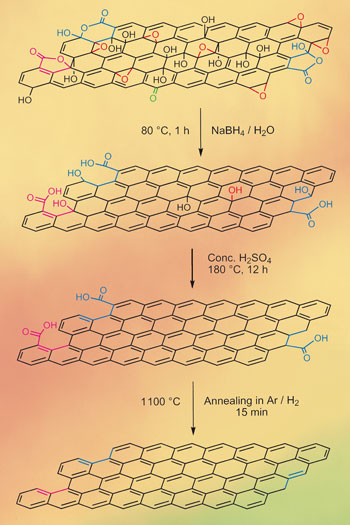Researchers find that graphene’s electrons are behaving like a nearly perfect liquid — highly turbulent with extremely low viscosity. Such properties emerge as graphene approaches the quantum critical point, a phase transition that breaks the rules of ordinary physics. While a block of ice melts into water only within a narrow temperature range, the transition to a perfect liquid is believed to happen at a wide range of temperatures above this quantum critical point.
To understand the dynamics of graphene’s interacting electrons, Markus Müller of the Abdus Salam International Center for Theoretical Physics in Trieste, Italy, and colleagues used quantum kinetic theory to calculate the ratio of graphene’s viscosity to its entropy — a measure of gloopyness to disorder in the system. Graphene’s ratio comes close to the theoretical lower bound that physicists have calculated for that ratio, and close to the low ratio observed in quark-gluon plasma, the superhot state of matter that existed just after the Big Bang. Instead of behaving like a gas, the quark-gluon plasma behaved more like a soup with extremely low viscosity, physicists learned in experiments at the Relativistic Heavy Ion Collider at Brookhaven National Laboratory on Long Island.
Interactions of charged particles like electrons, known as Coulomb interactions, are usually ignored when studying graphene, comments physicist Daniel Sheehy of Louisiana State University in Baton Rouge. But the new work reveals the importance of graphene’s Coulomb interactions, he says. It shows the electrons are strongly interacting.

